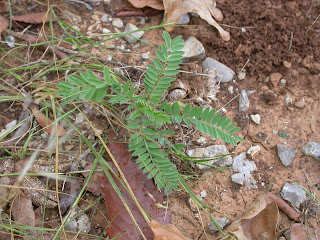
 This is an American Dagger Moth (Acronicta americana) caterpillar that I found on the side of our house. This caterpillar can range in color from yellowish to white. They are most commonly found in forests and woodlands in eastern North America, and can be found feeding on alder, American hornbeam, ash, basswood, birch, box elder, chestnut, elm, hazel, hickory, horse chestnut, maple, oak, poplar, redbud, sycamore, walnut, willow, and other woody plants.
This is an American Dagger Moth (Acronicta americana) caterpillar that I found on the side of our house. This caterpillar can range in color from yellowish to white. They are most commonly found in forests and woodlands in eastern North America, and can be found feeding on alder, American hornbeam, ash, basswood, birch, box elder, chestnut, elm, hazel, hickory, horse chestnut, maple, oak, poplar, redbud, sycamore, walnut, willow, and other woody plants.
 The Saddleback (Acharia stimulea) is another caterpillar that has stinging spines. In fact, the sting is said to be one of the most potent of North American caterpillars. Even the cocoon of this species can deliver a sting. Saddlebacks can be found in fields, gardens, edges of wetlands, and woodlands through the Midwest and south to Florida and Texas. They can be found feeding on a wide variety of plant species, including apple, aster, blueberry, buttonbush, cabbage, citrus, corn, grass, maple, oak, and garden and ornamental species.
The Saddleback (Acharia stimulea) is another caterpillar that has stinging spines. In fact, the sting is said to be one of the most potent of North American caterpillars. Even the cocoon of this species can deliver a sting. Saddlebacks can be found in fields, gardens, edges of wetlands, and woodlands through the Midwest and south to Florida and Texas. They can be found feeding on a wide variety of plant species, including apple, aster, blueberry, buttonbush, cabbage, citrus, corn, grass, maple, oak, and garden and ornamental species. This non-stinging caterpillar is that of a Polyphemous Moth (Antheraea polyphemus). They can be found in barrens, woodlands, and forests throughout North America (except in Arizona and Nevada). Polyphemous Moth caterpillars eat a variety of plants, including apple, ash, birch, dogwood, elm, hazel, hickory, maple, oak, rose, and willow. I've never heard this, but Polyphemous Moth caterpillars have been known to make a snapping sound with their jaws.
This non-stinging caterpillar is that of a Polyphemous Moth (Antheraea polyphemus). They can be found in barrens, woodlands, and forests throughout North America (except in Arizona and Nevada). Polyphemous Moth caterpillars eat a variety of plants, including apple, ash, birch, dogwood, elm, hazel, hickory, maple, oak, rose, and willow. I've never heard this, but Polyphemous Moth caterpillars have been known to make a snapping sound with their jaws.
 The two photos above are both of the same species, Black Swallowtail (Papilio polyxenes). They are found in open fields, farmfields, gardens, wet meadows, and other open wetlands in eastern North America from Canada south to Florida and Texas, and even into Costa Rica. Black Swallowtail larvae most commonly feed on plants in the carrot family (Apiaceae), but can also be seen feeding on rue and on species in the citrus family (Rutaceae). When provoked, black swallowtail caterpillars invert a v-shaped organ (called an osmeterium) from behind the head that looks like a pair of horns. The osmeterium emits a strong odor that is distasteful to predators.
The two photos above are both of the same species, Black Swallowtail (Papilio polyxenes). They are found in open fields, farmfields, gardens, wet meadows, and other open wetlands in eastern North America from Canada south to Florida and Texas, and even into Costa Rica. Black Swallowtail larvae most commonly feed on plants in the carrot family (Apiaceae), but can also be seen feeding on rue and on species in the citrus family (Rutaceae). When provoked, black swallowtail caterpillars invert a v-shaped organ (called an osmeterium) from behind the head that looks like a pair of horns. The osmeterium emits a strong odor that is distasteful to predators. And finally, my favorite caterpillar, the Spicebush Swallowtail (Papilio troilus). Spicebush Swallowtails are found throughout much of the eastern United States, most commonly in woodlands and swamps, but they can also be found in fields and gardens. They feed on sassafras and spicebush. This caterpillar is showing a form of mimicry. Its head looks like that of a snake, especially to a passing bird, who may then think twice before trying to make a lunch of this species.
And finally, my favorite caterpillar, the Spicebush Swallowtail (Papilio troilus). Spicebush Swallowtails are found throughout much of the eastern United States, most commonly in woodlands and swamps, but they can also be found in fields and gardens. They feed on sassafras and spicebush. This caterpillar is showing a form of mimicry. Its head looks like that of a snake, especially to a passing bird, who may then think twice before trying to make a lunch of this species.







































